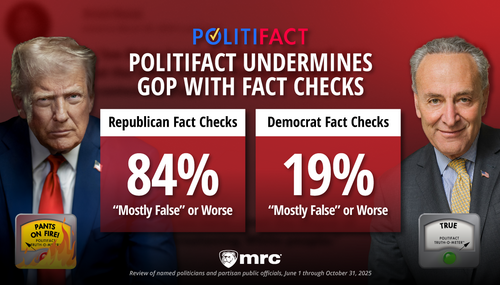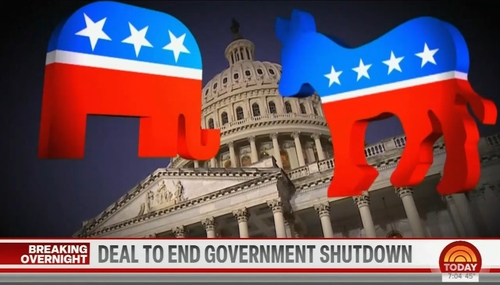The basic subject matter of an article in the June edition of the Smithsonian Magazine is actually quite interesting. It is about the ongoing restoration of many videotapes of the old Joe Pyne television show. Unfortunately, the author, Kevin Cook, chose to use this restoration as a way to slam not only the generally conservative Joe Pyne but current conservatives in the media as well.
However, despite Cook's petty slams, his article does provide some interesting information about Joe Pyne who many consider the father of entertaining talk radio and television interviewing. The good news is that sometime in the near future the public will have access to many Joe Pyne interviews long thought to be lost.
Charles Churchman throws a switch on a half-ton video console in a converted barn in Lafayette Hill, Pennsylvania. “Well, that won’t do,” he says. The oversized reel-to-reel console, complete with wave-form monitors and oscilloscopes, looks like a relic of the Gemini program. Churchman, 69, restores obsolete videotapes in his cluttered workshop. Twisting dials and pushing buttons, he reverses the crinkly 50-year-old tape in the machine, clears a dot of rust from it, restarts the tape, color-corrects the image. “That’s better,” he says. “I mean, Joe Pyne was a lot of things, but he wasn’t green.”
Churchman is one of several techies, archivists and vintage-TV fans who hope to save “The Joe Pyne Show” from history’s scrapheap. He’s the mad scientist of the bunch, a self-taught engineer who can transform strips of moldy, decades-old videotape into crisp digital images. He first heard about Pyne from his client Alexander Kogan Jr., president of Films Around the World, a decade ago. Kogan, whose firm restores and markets classic movies and TV programs, had discovered a trove of long-lost tapes in his collection: more than 100 episodes of Pyne’s once-famous talk show on reels of two-inch videotape that weighed 28 pounds apiece. Many were in bad shape, the iron oxide that fixed the image to its acetate base flaking off. Churchman, the video savant, restored a few at a time. He has yet to work on dozens of tapes that feature interviews with some of the most polarizing figures of the 1960s.
Okay, so far so good. The petty potshots come later. At least for now the article is informative.
Nearly forgotten today, Joe Pyne ran roughshod over America’s airwaves in the 1950s and ’60s. A charismatic bully in a jacket and tie, he grilled hippies, Black Panthers, “pinkos,” “fairies” and “women’s libbers,” practically inventing the attack interview. The New York Times called him “the ranking nuisance of broadcasting...hitting a jackpot by making a virtue of bad manners and wallowing in the cheap sensationalism of an electronic peepshow.” To Time magazine he was “Killer Joe, host of a tasteless electronic peepshow.” By 1968 Pyne had more than ten million viewers a week—comparable to the audience Bill O’Reilly, Sean Hannity and Megyn Kelly combined to reach last year.
According to media historian Donna Halper, author of Icons of Talk, “Pyne was one of broadcasting’s truly unique figures—the original angry talker. He rose from the lowest level of radio and founded the modern TV shoutfest.”
Got that? A "charismatic bully" and an "angry talker." In fact, if you watch his few surviving videotapes, Pyne seemed to be enjoying himself. Hardly angry.
Pyne died in 1970. He was 45. Had he lived, he might have lasted long enough to lecture Hannity, Howard Stern, Bill Maher, Rush Limbaugh and other rabble-rousers on how much they owed him. “When it comes to manipulating media,” says media critic Halper, “he was the father of them all.”
Cook takes the ghost of Joe Pyne in order to smear talk hosts such as Sean Hannity and Rush Limbaugh as "rabble-rousers."
One of Pyne’s protégés, the controversial radio shouter Bob Grant, followed his mentor Pyne as a talk show shouter in Los Angeles before moving to New York, where Grant paved the way for his successor at WABC, Sean Hannity. Hannity had first gained national attention subbing for Rush Limbaugh, another Bob Grant fan.
Now Pyne is labeled as a "talk show shouter" as the author includes the late Bob Grant in his slam-fest.
Even Vice President Mike Pence, who hosted a right-wing talk show in Indiana in the 1990s, was a successor of Pyne’s. (Soft-spoken Pence described himself as “Rush Limbaugh on decaf.”)
When a writer uses the term "right-wing" you pretty much know where his bias is coming from.
What seems to be overlooked in this article is that many of Joe Pyne's shows were non-political and flat out entertaining in a very funny way. An example is the following clip from the Joe Pyne show which featured someone with the worst hair dye job in his history as he is confronted by his very angry son-in-law. Comedy chaos ensues.
Fun Fact: The young man with glasses who rushes onto the stage in the light colored jacket is Steve Kane, one of the Joe Pyne Show producers. After he left that show he became the host of the longest running radio show in Florida history.




